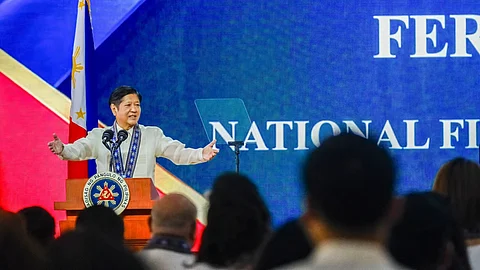
- NEWS
- the EDIT
- COMMENTARY
- BUSINESS
- LIFE
- SHOW
- ACTION
- GLOBAL GOALS
- SNAPS
- DYARYO TIRADA
- MORE

After President Ferdinand Marcos Jr. said the other day that he wanted to integrate micro, small, and medium enterprises (MSMEs) —including the smallest vendors and service providers — into the digital economy, cheap but reliable data connections are expected to become common.
The Chief Executive said this as he graced the inauguration of the first phase of the National Fiber Backbone (NFB) in Pasay City on Friday in a major push to enhance digital connectivity across the country.
The initial phase of the backbone stretches 1,245 kilometers and incorporates 28 nodes, from Laoag, Ilocos Norte, to Roces, Quezon City.
This phase boasts an impressive 600 Gbps optical spectrum capacity and aims to provide high-speed internet access to 14 provinces across Northern and Central Luzon.
Marcos also lauded the collaboration between government bodies and private sector partners, including Bases Conversion and Development Authority, TransCo, the National Grid Corporation of the Philippines, and a consortium led by Meta, for their role in achieving this milestone.
"The successful completion of Phase 1 is an enormous breakthrough as we continue our quest to increase internet connectivity and service capacity," Marcos said.
Five more phases by 2026
With an eye on the future, the government plans to complete five more phases of the NFB project by 2026, aiming to increase internet penetration from 33 percent to 65 percent and lower the cost of internet access to as much as $5 per Mbps.
This expansion is expected to reach approximately 70 million Filipinos, significantly impacting employment, foreign investment, and societal advancement.
The NFB will also enhance operational efficiency for 346 national and local government offices connected to GovNet, generating potential annual savings of more than P145 million.
Additionally, it will provide a digital lifeline to over 3,000 Filipinos at various Free WiFi Sites, benefiting around 750,000 people in the regions covered.
In his closing remarks, President Marcos stressed the importance of the Internet as a basic human right and the transformative power of having free and fast access to information.
"We are assured that the NFB Phase 1 will already make a significant impact on our internet connectivity and in the day-to-day activities of ordinary Filipinos," he concluded, projecting a brighter digital future for all Filipinos.
